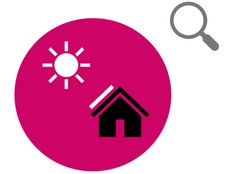Step 1: Prepare
What is it?
Use your BBC micro:bit to find out how distance affects the volume of a sound.
This project is developed in partnership with White Rose Science for science teachers and allows students to learn about how sound travels. Students can also learn about using sequences, loops, variables, and selection in computer programs.
This video explains how to do the experiment.
How it works
- You play a continuous sound at a fixed volume from a fixed location.
- You measure the sound levels in decibels at two-meter intervals from the sound source, using your micro:bit and a battery pack.
- You should be able to work out from the measurements that sounds get fainter as they get further from the sound source.
What you need
- a continuous sound source at a fixed volume; you might like to play our tone.mp3 file from your computer (do not use a sound source which could vary in volume, such as a drum)
- a micro:bit
- a battery pack
- a tape measure or meter ruler
- a large quiet space to conduct the experiment in, such as a school hall
Step 2: Investigate
- Download the hex file and put the code onto your micro:bit. You do not need to write the code for this project yourself to do the experiment. If you are interested in coding it, visit the Step 3: Code it section below.
- Play your continuous sound.
- Put the micro:bit next to your sound source. Press button A to take a reading and button B for the reading to appear on the micro:bit’s LED display.
- When the micro:bit’s LED display is not showing a reading, it shows a graph indicating current sound levels. You can use this graph to help you decide when to take a reading. Make sure that there are no other sounds that would make your readings less accurate.
- Using your tape measure or ruler, measure a two-meter distance from the sound source and take another reading.
- Continue taking readings at two-meter intervals up to eight meters. (The micro:bit’s recordings may be less accurate after this distance).
Tips
- Conduct the experiment in a large space with no obstacles, so that you can easily measure distances from the sound source in a straight line.
- Conduct the experiment in a quiet space.
- For more accurate results, take a few readings at each distance interval and work out their average.
Step 3: Code it
Watch this video to find out how to code the project:
If you are interested in modifying the code for this project, click on one of the buttons below:
This content is published under a Creative Commons Attribution-ShareAlike 4.0 International (CC BY-SA 4.0) licence.



